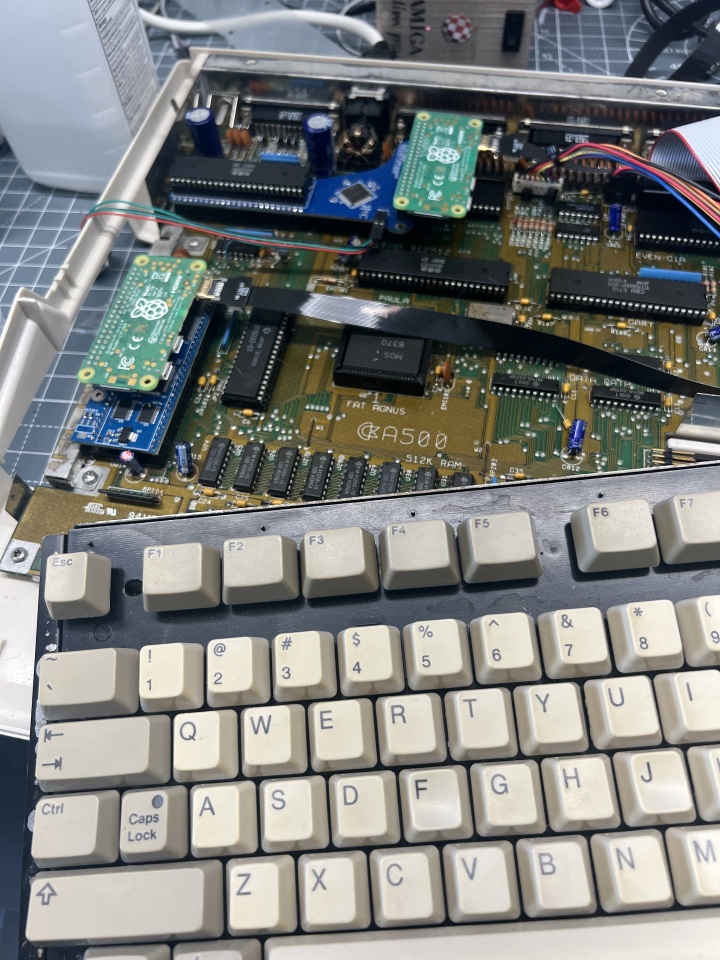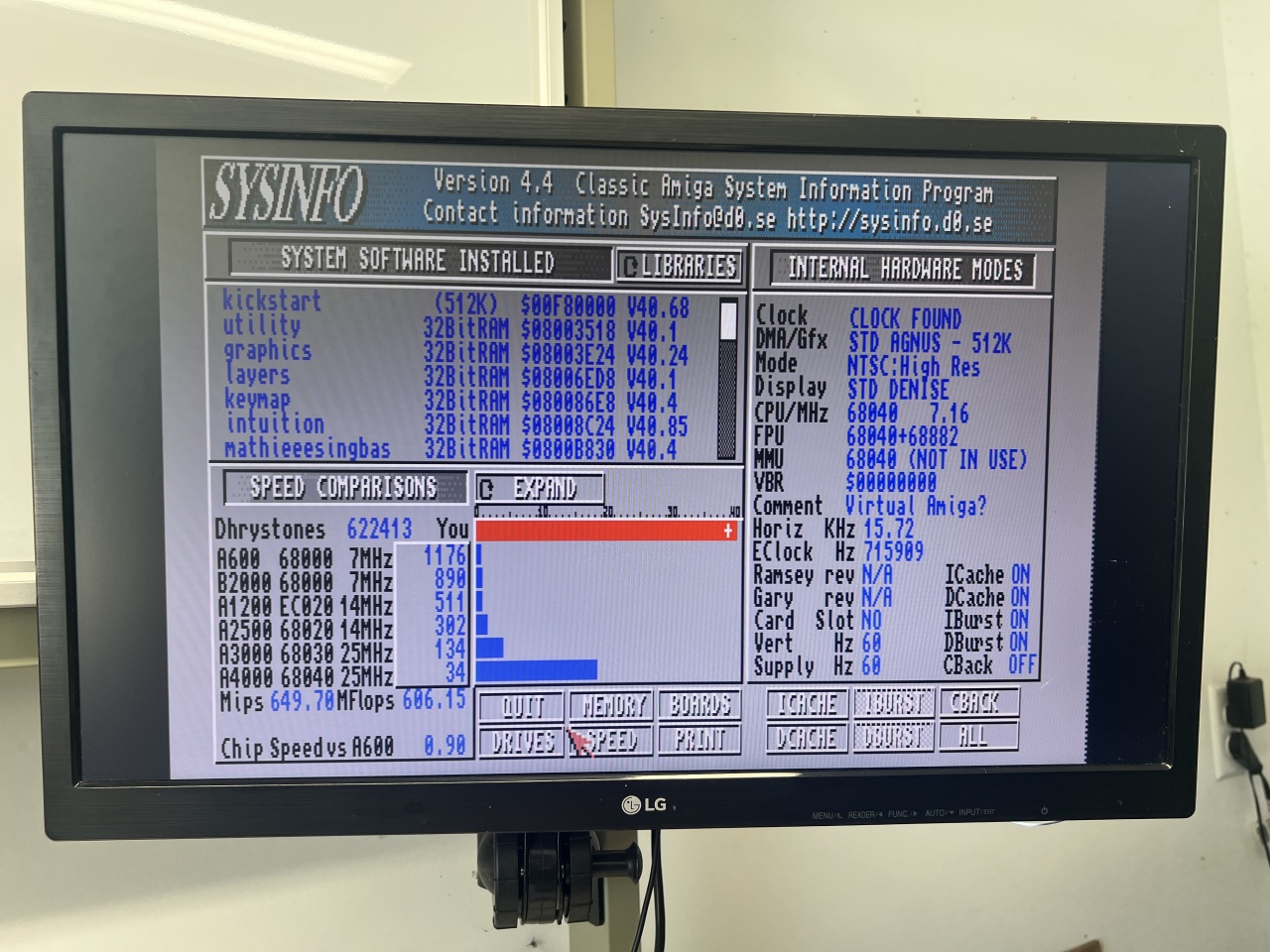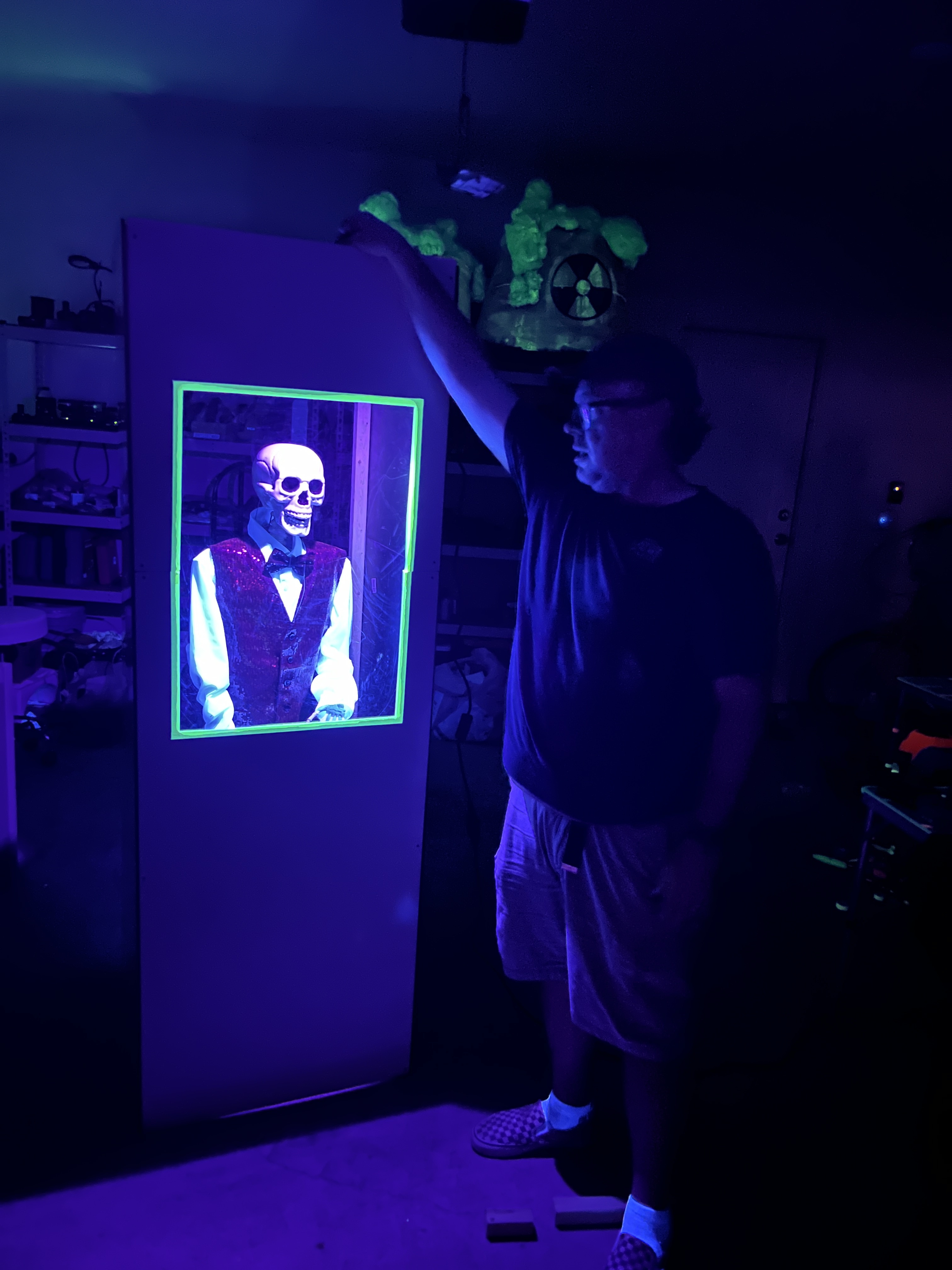I'm going to do a whole post / video on this at some point, but for now, just going to place this here. Along with this link for a vintage article describing exactly the same thing.
From some amiga bbs:
> How did you do it? I mean, connect your Amiga 1200 to your Sony
> KV25-XBR? Nobody I've spoken with at any computer store or Sony dealer has
> any idea where to get a cable to connect a computer to the 34-pin RGB port
> on my Sony. I even called Sony customer service, and those folks are real
> polite but even THEY don't have a clue.
I went to a Sony Service Center back in 1985 and purchased the
"KV-25XBR/RM-724/APM-X3U Service Manual". It has schematics and lists
two options for the RGB MULTI INPUT:
1) The PX-34 RGB multi connector plugs into the back of the TV.
It has to be soldered on to the end of a cable that brings RGB
data to the TV.
2) The SMK-0001 cable has a PX-34 at one end and a "microcomputer
connector" at the other. (From the drawing, it is not obvious
whether this is a DB-9 or some other style of connector. The
microcomputer in the diagram looks more like a TI-99 than an IBM-PC.)
The PX-34 was listed for more than $30, and there was no guarentee that the
SMK-0001 had the connectors I needed. So I built my own.
I purchased a standard 34-pin connector with flat ribbon cable from a
computer store, and wired up a box that has an Amiga-compatible 9-pin
video connector, 6 RCA phono jacks (red green blue sync left right), and
2 switches. One switch selects sync-on-green versus separate sync, the
other enables TV audio while in RGB mode. The Amiga has a 23-pin video
connector, so I had to use either a DB-23 to DB-9 cable, or use a
genlock (which uses a 9-pin output connector).
9-pin Video connector (used by A2002 and A1084 monitors, AmiGen genlock):
01 = Sync ground 06 = no connection
02 = RGB ground 07 = combined Sync
03 = Red 08 = no connection
04 = Green 09 = no connection
05 = Blue
07+01 go to a black RCA jack labeled "Sync"
03+02 go to a red RCA jack labeled "Red"
04+02 go to a green RCA jack labeled "Green"
05+02 go to a blue RCA jack labeled "Blue"
On a 23-pin Video connector, 03=Red, 04=Green, 05=Blue, 10=Csync, and
16-20 are all ground. Do not use 11=Hsync or 12=Vsync in this case.
(On the 9-pin male to 9-pin female cable I was using, I took some wire
cutters to pins 06, 08 and 09, since their signals confused my A2002
monitor.)
I planned on adding a second DB-9 for CGA (TTL) monitor, but never got
around to it. The original IBM PC used 1=GND, 2=unused, 3=RED, 4=GREEN,
5=BLUE, 6=INTENSITY, 7=unused, 8=H-SYNC, 9=V-SYNC.
34-pin RGB connector:
01 = +5V 18 = no connection
02 = +5V 19 = no connection
03 = ground 20 = Audio, Right
04 = ground 21 = Mode Switch (digital RGB vs analog RGB)
05 = Remote Ctl gnd 22 = no connection
06 = Composite gnd 23 = Video (composite)
07 = Audio ground 24 = Audio, Left
08 = Red ground 25 = Red
09 = Green ground 26 = Green
10 = Blue ground 27 = Blue
11 = Ground 28 = no connection
12 = Blank ground 29 = Blanking
13 = Hsync ground 30 = H-sync
14 = no connection 31 = V-sync
15 = Vsync ground 32 = no connection
16 = Ground 33 = RGB vs Normal
17 = no connection 34 = Audio Select (+5v enables audio)
01+34 go to a SPST switch (to enable audio while in RGB mode)
20+03 go to a red RCA jack labeled "Right"
24+07 go to a white RCA jack labeled "Left"
25+08, 26+09, 27+10 go to the Red, Green, Blue jacks (and Amiga connector)
13 goes to the Sync jack ground, 30 goes to a SPDT switch, which connects
it to either the Sync jack (separate) or the Green jack (sync-on-green)
The phono jacks are useable by a "GIGI" (DEC VK100 terminal with BASIC).
The 9-pin connector is useable by an Amiga 23-pin to 9-pin cable, or
by the 9-pin output of an AmiGen genlock.
See also the "Sci.Electronics.Repair FAQ on Pinouts"
http://www.repairfaq.org/REPAIR/F_Pinouts3.html#PINOUTS_015
for "Sony RGB Multi Input (found on KV-25XBR TV's).
Links to other documents:
*) http://www.hut.fi/Misc/Electronics/circuits/vga2tv/ for details
on converting VGA video (15 pin) to NTSC (CGA, 9 pin).
*) http://home.att.net/~billhudson/rybyrgb.pdf has a component (YPrPb)
to RGB converter.
*) http://elm-chan.org/works/yuv2rgb/report.html - look for "Circuit Diagram
3 (Simplified Lv.2) BG part is omitted (Sync on RGB)".
--
Joe Smith <js-cgi@inwap.com> CA license plate: "POPJ P," 36-bits forever!
Humorous disclaimer: "My Amiga 3000 speaks for me." http://www.inwap.com/



